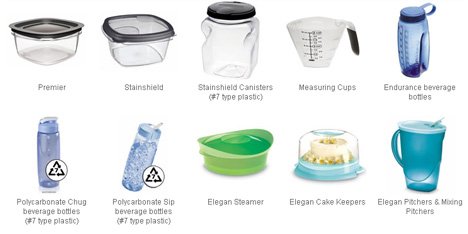What makes these everyday things—a food storage container, a measuring cup, a cake keeper, a beverage bottle, etc—potential contemporary medical museum objects?

Well, it turns out they all contain bisphenol A, 
In addition to being a very useful hard plastic ingredient, however, BPA is also a biologically active molecule, having the spooky effect of being an estrogen receptor antagonist; in other words it disturbs the endocrine system. The effects of endocrine disruptors are debated. But most pundits seem to support a better-safe-than-sorry policy (see, for example, this interesting interview on the Stanford School of Medicine website with emeritus endocrinologist David Feldman, who warned about the possible effects in the 1990s).
The display of a collection of such objects could be a nice everyday-life appetizer to a future exhibition about the many dangerous substances—radioactive isotopes, toxic chemicals, nanoparticles and so forth—that affect public health. The problem with such exhibitions is precisely the invisibility of many environmental hazards. The use of objects like Rubbermaid beverage bottles and Tupperware microwave canisters could be one way to mentally visualize (and materialize) the problem. (Tupperware say they’ve abolished BPA in their baby bottles and other products, but that they keep it in their microwave line.)
(credits: thanks to Medgadget for Feldman interview link and object image—which they in turn got from Rubbermaid—and to Wikipedia for molecule image)
What makes these things medical objects?
What makes these everyday things—a food storage container, a measuring cup, a cake keeper, a beverage bottle, etc—potential contemporary medical museum objects? Well, it turns out they all contain bisphenol A, a rather simple organic molecule used as a key monomer in the production of polycarbonate plastics. In addition to being a very useful hard plastic ingredient, however, BPA is […]


